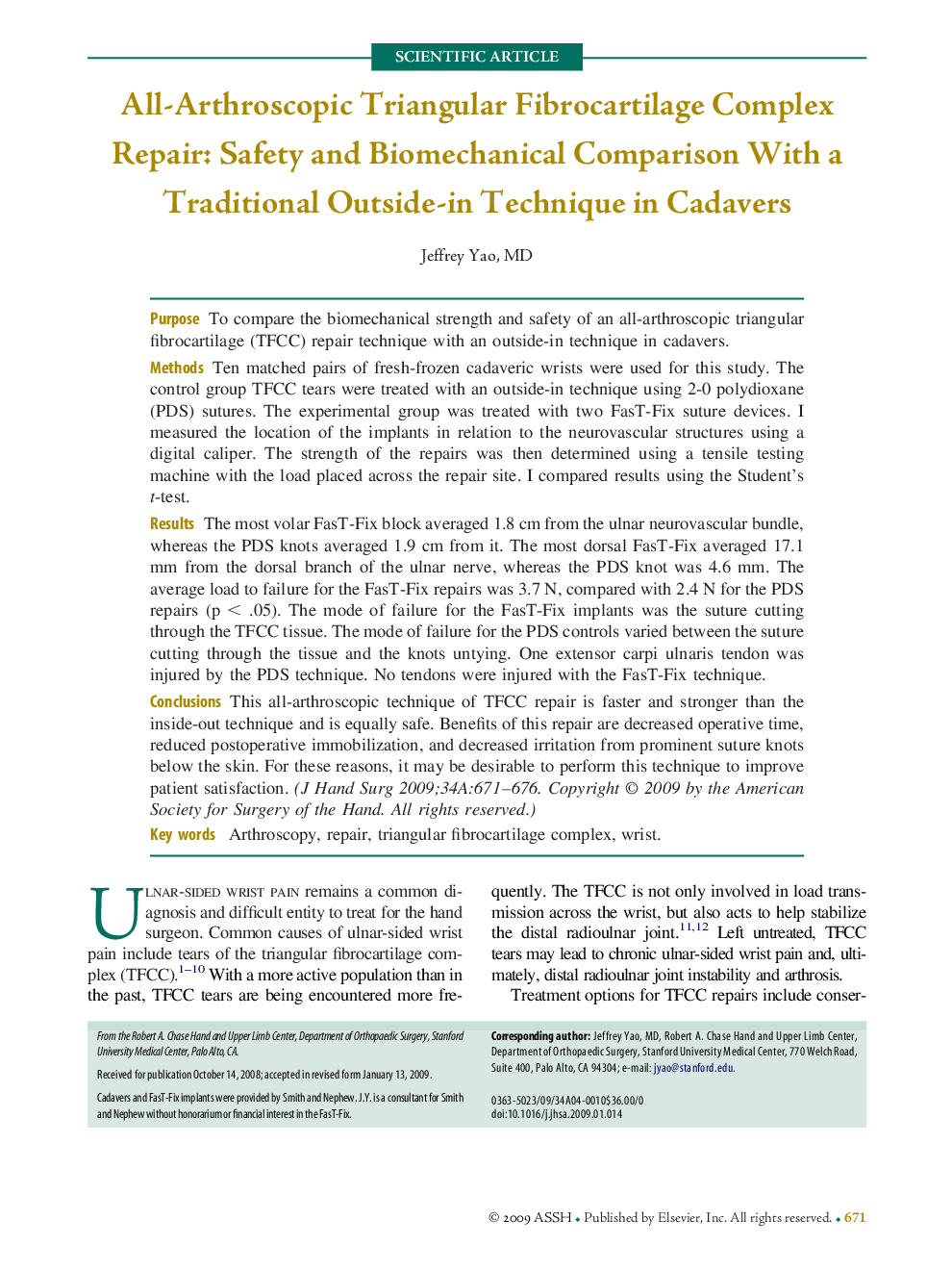| کد مقاله | کد نشریه | سال انتشار | مقاله انگلیسی | نسخه تمام متن |
|---|---|---|---|---|
| 4070679 | 1604434 | 2009 | 6 صفحه PDF | دانلود رایگان |

PurposeTo compare the biomechanical strength and safety of an all-arthroscopic triangular fibrocartilage (TFCC) repair technique with an outside-in technique in cadavers.MethodsTen matched pairs of fresh-frozen cadaveric wrists were used for this study. The control group TFCC tears were treated with an outside-in technique using 2-0 polydioxane (PDS) sutures. The experimental group was treated with two FasT-Fix suture devices. I measured the location of the implants in relation to the neurovascular structures using a digital caliper. The strength of the repairs was then determined using a tensile testing machine with the load placed across the repair site. I compared results using the Student's t-test.ResultsThe most volar FasT-Fix block averaged 1.8 cm from the ulnar neurovascular bundle, whereas the PDS knots averaged 1.9 cm from it. The most dorsal FasT-Fix averaged 17.1 mm from the dorsal branch of the ulnar nerve, whereas the PDS knot was 4.6 mm. The average load to failure for the FasT-Fix repairs was 3.7 N, compared with 2.4 N for the PDS repairs (p < .05). The mode of failure for the FasT-Fix implants was the suture cutting through the TFCC tissue. The mode of failure for the PDS controls varied between the suture cutting through the tissue and the knots untying. One extensor carpi ulnaris tendon was injured by the PDS technique. No tendons were injured with the FasT-Fix technique.ConclusionsThis all-arthroscopic technique of TFCC repair is faster and stronger than the inside-out technique and is equally safe. Benefits of this repair are decreased operative time, reduced postoperative immobilization, and decreased irritation from prominent suture knots below the skin. For these reasons, it may be desirable to perform this technique to improve patient satisfaction.
Journal: The Journal of Hand Surgery - Volume 34, Issue 4, April 2009, Pages 671–676